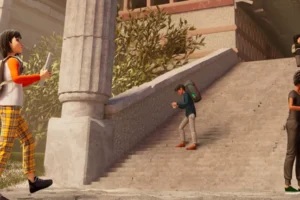About the Challenge
What is the Momo Challenge?
Momo Challenge is the latest in a series of chain-letter viral stories. It’s arresting because of the disturbing image that represents the Momo character. The image comes from Midori Hayashi, a Japanese doll artist not associated with the game.
Players who want to take part search online for a number to text or Whatsapp. Once they have sent the first message they get replies including challenges to commit self-harm or suicide as well as grotesque images.
Is it a myth or a real threat to children?
The Momo Challenge sounds alarming, particularly as children are attracted to the idea, but in reality, the occurrences seem few and far between. There have been a number of reports in the press about it being linked to suicides and self-harm. Currently, these are only associations with the game and no evidence of direct harm caused by the game has been substantiated.
Still, the image and the ghoulish story that accompanies it may well distress children and parents should be aware of its existence. Children will encounter the story in the playground, but also in YouTube videos and user-created content in video games like Minecraft and Roblox.
Beyond the headlines
Headlines have recently reported that Momo has hacked into games to appear in Fortnite and Minecraft. This isn’t accurate. Children can encounter cartoon approximations of Momo in content created by other players and shared online in Roblox and Minecraft.
Setting the Restricted mode on your child’s Roblox account, and not using a modified version of Minecraft will avoid these issues. Console versions of Minecraft do not include this kind of modding.
How to support your child
I’d suggest that instead of warning children about Momo specifically, it’s better to use this as an opportunity to teach good practices online.
This should start by ensuring that kids know not to contact strangers online, regardless of the method. Setting privacy systems on devices with your child is a great way to have this conversation and agree on automatic precautions.
Parents and carers should ensure there’s an atmosphere of openness and transparency about online activity. Keep an eye on device usage and if you notice a child switching screens on their devices when approached or new numbers or email addresses on their devices it’s worth checking in with them.
It’s also important to have video games and screens used in shared family areas so you can see what kids are doing. This also means they can talk to you more easily about anything that upsets them.
In Minecraft, you would only see the Momo Challenge Character if your child is using mods and custom games, which are not available on the console version of the game. In Roblox, selecting the Restricted setting for your child’s accounts ensures they can only access games that have been checked for appropriateness.
On YouTube, select restricted mode so that children cannot access content flagged by the YouTube community as potentially sensitive.
Where to go for help if your child has been affected by dangerous online crazes
There are a number of organisations that can offer direct support to you and your child. Here are a few that we would recommend:




